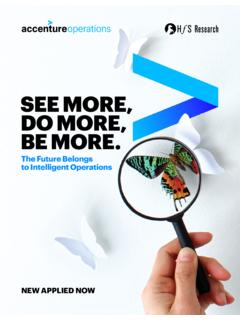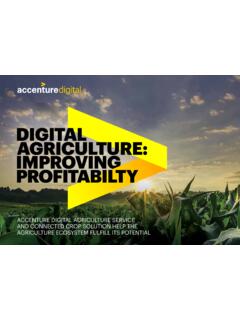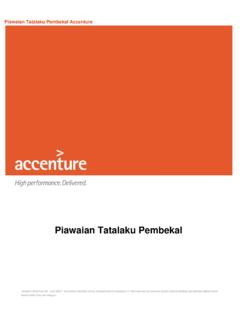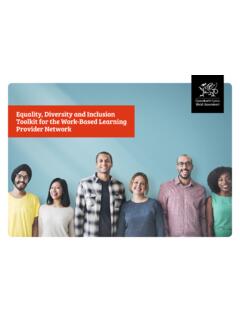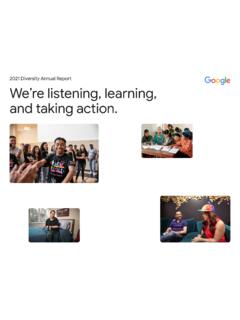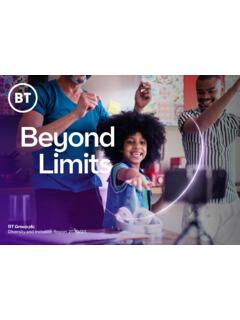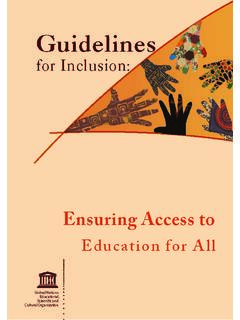Transcription of Getting to Equal: The Disability Inclusion Advantage ...
1 Getting TO EQUAL: THE Disability Inclusion Advantage A research report produced jointly byGetting to Equal 2018: The Disability Inclusion Advantage2 Persons with disabilities present business and industry with unique opportunities in labor-force diversity and corporate culture, and they re a large consumer market eager to know which businesses authentically support their goals and dreams. Leading companies are accelerating Disability Inclusion as the next frontier of corporate social responsibility and mission-driven investing. Ted Kennedy, Jr., Disabilities Rights Attorney, Connecticut State Senator and Board Chair, American Association of People with Disabilities3 Getting to Equal 2018: The Disability Inclusion AdvantageIntroduction What if you found out that your company is significantly underutilizing a critical talent pool?
2 At a time when there are more job openings in the than workers, you d want to know more, wouldn t you? And, what if, by recognizing the value of that talent pool and leveraging it, your company could also realize significant gains in profitability, value creation and shareholder returns as well as other business benefits? New research from Accenture, in partnership with Disability :IN and the American Association of People with Disabilities (AAPD), reveals that companies that embrace best practices for employing and supporting more persons with disabilities in their workforce have outperformed their peers. In large part, companies haven t leveraged the talents of persons with disabilities for three reasons: A lack of understanding of the scope of the talent available; A lack of understanding of the potential benefits; and Misconceptions about the cost versus the ROI of Disability Inclusion .
3 But leading companies that are working successfully toward Disability Inclusion have also achieved tangible financial benefits. For example, the research shows that leading companies were, on average, twice as likely to have higher total shareholder returns than those of their peer to Equal 2018: The Disability Inclusion AdvantageA Vast, Untapped Market Despite the strength of the labor market, persons with disabilities1 are strikingly under-employed. As of July 2018, only 29 percent of Americans of working age (between ages 16 and 64) with disabilities participated in the workforce, compared with 75 percent of Americans without a Disability . In 2017, the unemployment rate for persons with disabilities was more than twice that for those without a Disability percent versus percent.
4 There are million people of working age living with disabilities in the , so the research suggests that if companies embrace Disability Inclusion , they will gain access to a new talent pool of more than million people. That represents a significant opportunity to strengthen our businesses and our economy. According to other research cited within this report, employees with disabilities offer tangible benefits, including increased innovation, improved productivity and a better work environment. And, of course, workers are consumers, too. The GDP could get a boost up to $25 billion if just 1 percent more of persons with disabilities joined the labor force. The good news, according to our analysis, is that organizations are successfully employing persons with disabilities and initiating and developing their Disability Inclusion programs.
5 Figure 1: A Wide Employment Gap Persons with disabilities are much less likely to be employed. Population (between ages 16 and 64) by labor-force status and Disability status, July 2018 0% 10%20%30%40%50%60%70%80%90%100%EmployedD isability No Disability UnemployedNot in Workforce 68% 29% 3% 22% 75% 3% Source: Accenture analysis based on data from the Bureau of Labor Statistics, July 20181 The Americans with Disabilities Act Amendments Act (ADAAA) defines a person with a Disability as someone who has a physical or mental impairment that substantially limits one or more major life activities; has a record of such an impairment; or is regarded as having such an impairment. The ADA was amended in 2008 and became effective January 1, 2009. The ADAAA requires a broader interpretation of Disability by schools, testing agencies and employers than the original law.
6 5 Getting to Equal 2018: The Disability Inclusion AdvantageAccenture s internal Disability champions network of more than 16,000 employees worldwide helps colleagues feel included at work. A Market Worth Targeting The Office of Disability Employment Policy categorizes persons with disabilities as the third-largest market segment in the , after Hispanics and African-Americans. The discretionary income for working-age persons with disabilities is $21 billion greater than that of the African-American and Hispanic segments 2 A hidden market: The purchasing power of working-age adults with disabilities, American Institutes for Research, April, 20186 Getting to Equal 2018: The Disability Inclusion AdvantageDisability Inclusion and the Bottom Line We took a closer look at DEI results over the past four years to unearth best-in-class companies those that stood out for leadership in areas specific to Disability employment and Inclusion .
7 We identified an elite group of 45 companies that excelled in these key categories, which we are calling Disability Inclusion Champions (or Champions ). They make up 32 percent of the 140 companies that are part of this study. (See About the Research for more details.) Our analysis focused on two important measures of financial performance among respondents: profitability (revenues and net income) and value creation (economic profit margin). Across all the dimensions of the DEI that we analyzed, Champions are, compared with other companies in the sample, performing above-average financially. Champions achieved on average 28 percent higher revenue, double the net income and 30 percent higher economic profit margins3 over the four-year period we analyzed.
8 0 5 10 15 20 25 35 30 N=140 (unique respondents to DEI survey 2015-2018) 10-2020-3030-4040-5050-6070-8080-9090-10 0 Number of Companies Disability Inclusion Champions Figure 2: A Deep Dive into the DEI A new independent scoring system developed by Accenture Research identifies Disability Inclusion Champions for their unique leadership in Disability Inclusion . Source: Getting to Equal 2018: The Disability Inclusion Advantage , Accenture The Disability Equality Index Disability :IN, in partnership with the American Association for People with Disabilities, produces the Disability Equality Index (DEI) an annual transparent benchmarking tool that gives businesses an objective score on their Disability Inclusion policies and practices. It measures and weighs a wide range of criteria across key best practice categories: culture and leadership; community engagement and support service; employment practices; enterprise-wide access and supplier diversity (not included in this analysis).
9 Companies participating in the DEI are typically large, with annual revenues of the total sample averaging $43 billion. 3 Economic profit margin (or economic value add margin) is a measure of profitability that compares net operating profit to total cost of capital. 7 Getting to Equal 2018: The Disability Inclusion AdvantageFigure 3: Champions Outperform on Profitability and Value Creation Overall scores show a significant difference. $0 $10 $20$30$40$50$60 ChampionsRevenue US$ (Billion) Others $50 +28% $39 $0$ $ $ $ $ $ Income US$ (Billion) Others$ 2x $ 2 .7 0%2%4%6%10%8%14%18%16%12%ChampionsEconom ic Profit Margin Percentage Others16% +30% 12% All results are significant at 1 percent. Test was based on panel data regression model to account for temporal and industry variation; see Appendix for more detail on methodology.
10 Source: Getting to Equal 2018: The Disability Inclusion Advantage , Accenture Moreover, Disability Inclusion Champions were, on average, two times more likely to outperform their peers in terms of total shareholder returns compared with the rest of the sample. Whether or not a company qualifies as a Champion, strengthening its commitment to persons with disabilities makes a difference: 2xChampions were twice as likely as others to have higher total shareholder returns than those of their peer group Accenture research shows that companies that have improved their DEI score over time ( Improvers 4) were four times more likely to have total shareholder returns that outperform their peers, compared to non-improvers. On average, Improvers total shareholders returns outperform industry peers5 by 53 percent, while other companies outperform their peers by only 4 percent.


